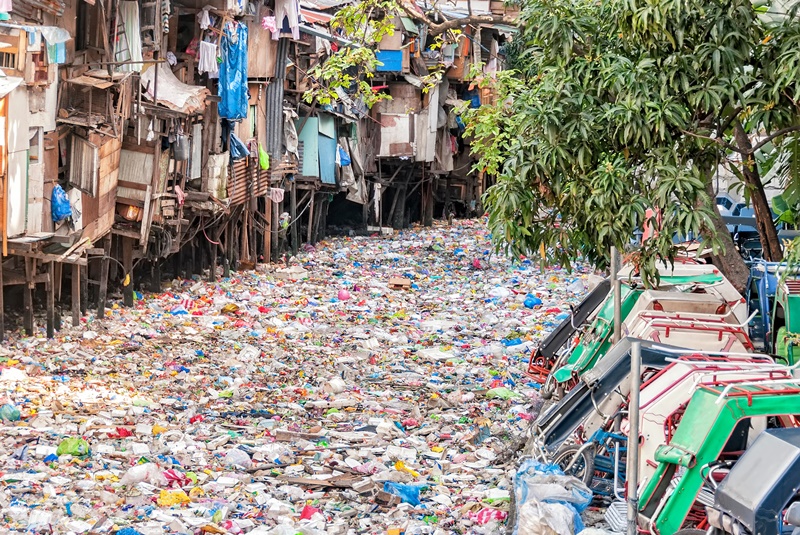
An urban river polluted with plastic. © Adobestock/Antonio Oquias
Plastic pollution in our oceans is one of the most pressing environmental issues we are facing today. According to UNEP, more than eight million tonnes of plastic waste end up in our oceans every year. Because of plastic’s durability and resistance to degradation, it’s almost impossible for nature to fully break it down. There’s the plastic pollution we see that is washed up on beaches, but the consequences are also severe for marine life, as a large amount of plastic litter gets ingested by animals or entangled in corals.
Addressing marine plastic pollution: River interventions fundamental
A recent study finds that 70-80% of plastic in the oceans stems from land-based sources, much of it transported by rivers, indicating that interventions in rivers are essential to reduce ocean plastic pollution. And indeed, The Ocean Cleanup couldn’t have said it better: Rivers are the arteries that carry plastic from land to sea.
‘Understanding, monitoring and forecasting river plastic flows can help identify where the problem is, where it originates and how best to intervene’, says Nicola Balbarini, DHI’s Head of Water Resources Operations.
This is where a new risk and warning system for macroplastic litter comes in.
Operational tool provides real-time estimates of river plastic loads in rivers worldwide
Developed by UNEP-DHI in collaboration with the UNEP Freshwater Ecosystems Unit and the Global Partnership on Marine Litter (GPML), the real-time operational tool helps identify upcoming freshwater hotspots and plastic accumulation points up to nine months in advance. These forecasts can help decision makers from the global to the local level plan and prioritise interventions and monitoring activities.
How it works
The system builds upon DHI’s Global Hydrological Model and includes all major river systems in the world. Using estimates of how much plastic is entering rivers every day as well as field data on plastic loads as model input, simulations of plastic accumulation are produced for over 870,000 points along rivers worldwide. The system can be accessed through the GPML Data Hub.
Take a quick tour:
The GPML Risk and Warning System for Macroplastic Litter - Quick Tour
About UNEP-DHI
The UNEP-DHI Centre on Water and Environment is a United Nations Environment Programme (UNEP) centre of expertise, dedicated to improving the management, development and use of freshwater resources from the local to the global level. The UNEP-DHI Centre operates by drawing on DHI’s technical expertise in water and project implementation, and has attained global recognition for its work in promoting sustainable water resources management and supporting the water-related SDG targets.